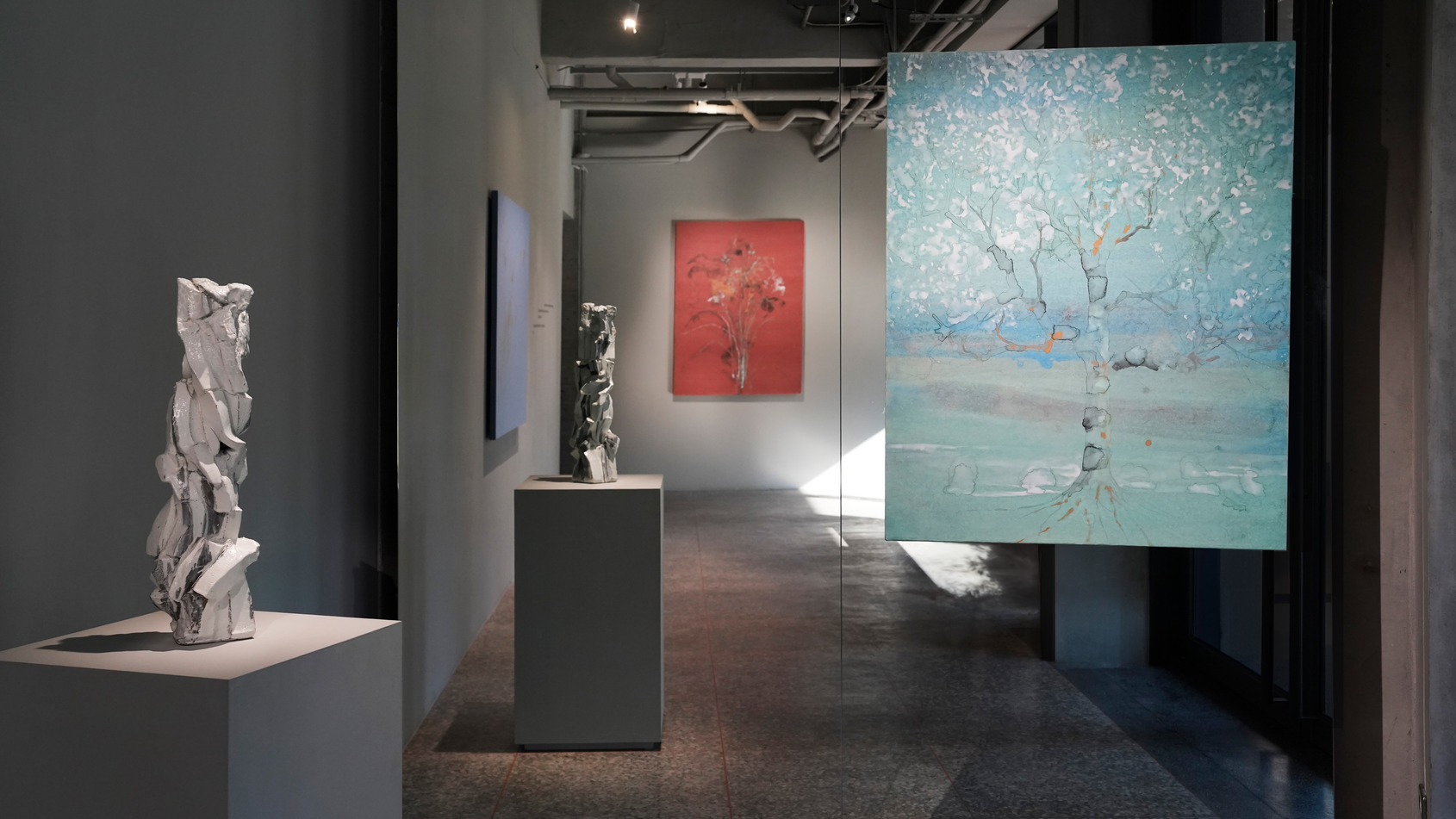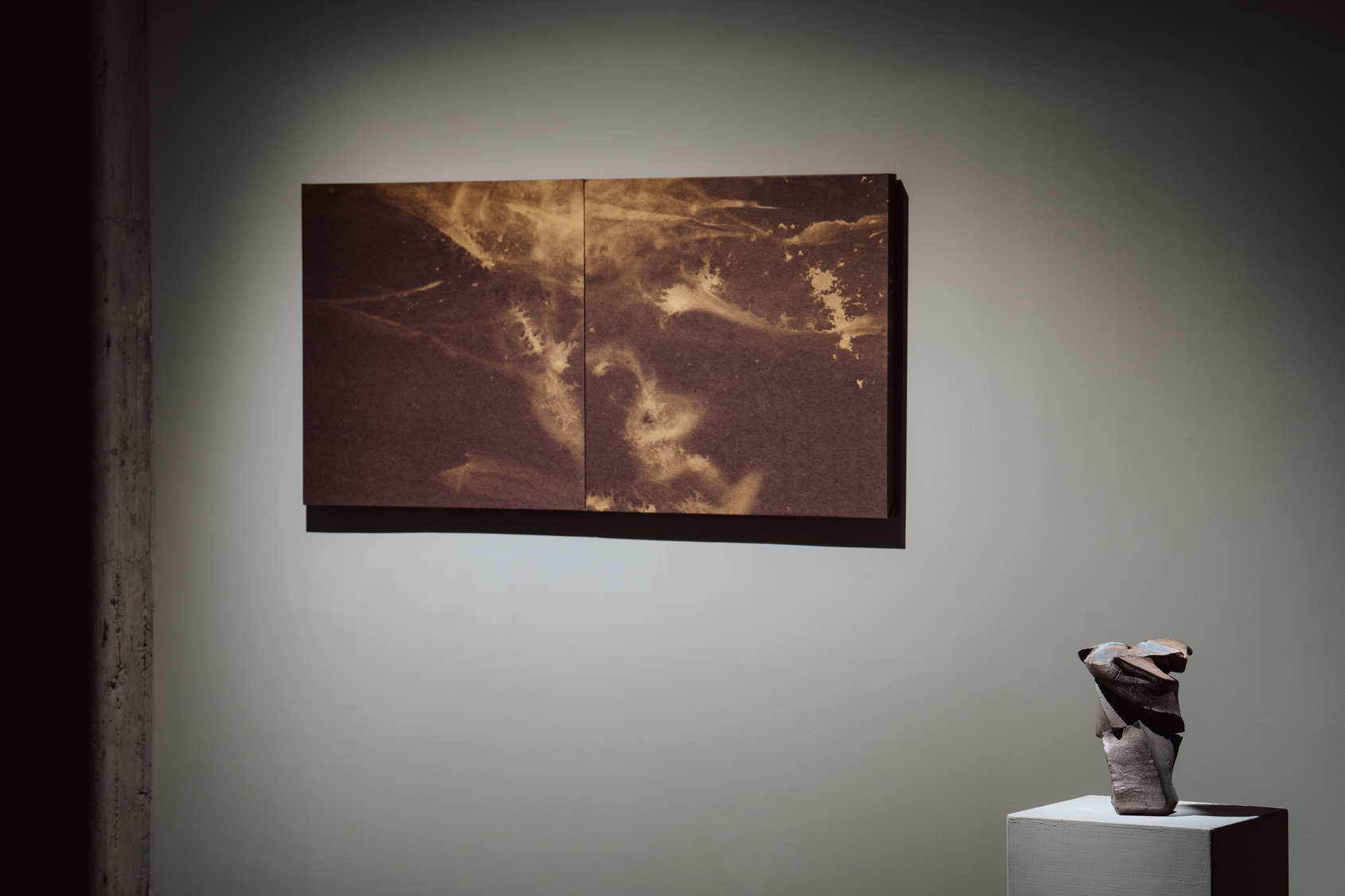“The essence of art would be: the setting itself to work of truth.” — Heidegger
We gaze upon dust and gold — two states of existence intertwined within the flow of time. Dust signifies impermanence, the quotidian, and the remnants and continuities that remain after the erosion of matter; Gold signifies a flash of light, the sediment of belief, and the indestructible resonance of the spiritual.
This exhibition, collaboratively presented by Makoto Fujimura and Shozo Michikawa, emerges from their keen sensitivity to materiality and profound exploration of the spiritual, weaving a poetic dialogue on time and matter. As The Book of Ecclesiastes proclaims, “All are from dust, and to dust all return.” Within this cycle, we witness not merely the dispersal of material substance but also the transformation of existence itself.
The exhibition takes its inspiration from Makoto Fujimura’s Walking on Water series and its inquiry into “walking within the impossible.” Yet the true focus lies in how both artists, through their distinct materials and spiritual concerns, unfold a dialogue beyond words. Makoto Fujimura inscribes prayers of stillness and layered depth through light and mineral pigments, while Shozo Michikawa conveys the rhythms and fractures of nature through fire and clay.
Their works are distinctive, yet in the resonances between materiality and spirituality, they generate currents of energy and aftershocks of thought, guiding us to perceive how all things are shaped through the passage of time. This exhibition is not merely a presentation, but an invitation — to gaze in silence, and to gather light from dust.
Dust and Gold is not a mere juxtaposition of forms, but a quiet resonance. What we seek is the texture of time sedimented in material, the spaces and depths that emerge through viewing, and the energy and presence released through the act of creation. Dust and gold, light and earth, fracture and radiance — in this space they become yin and yang, responding to one another, reflecting our most essential questions of existence, faith, and transformation in today’s world.
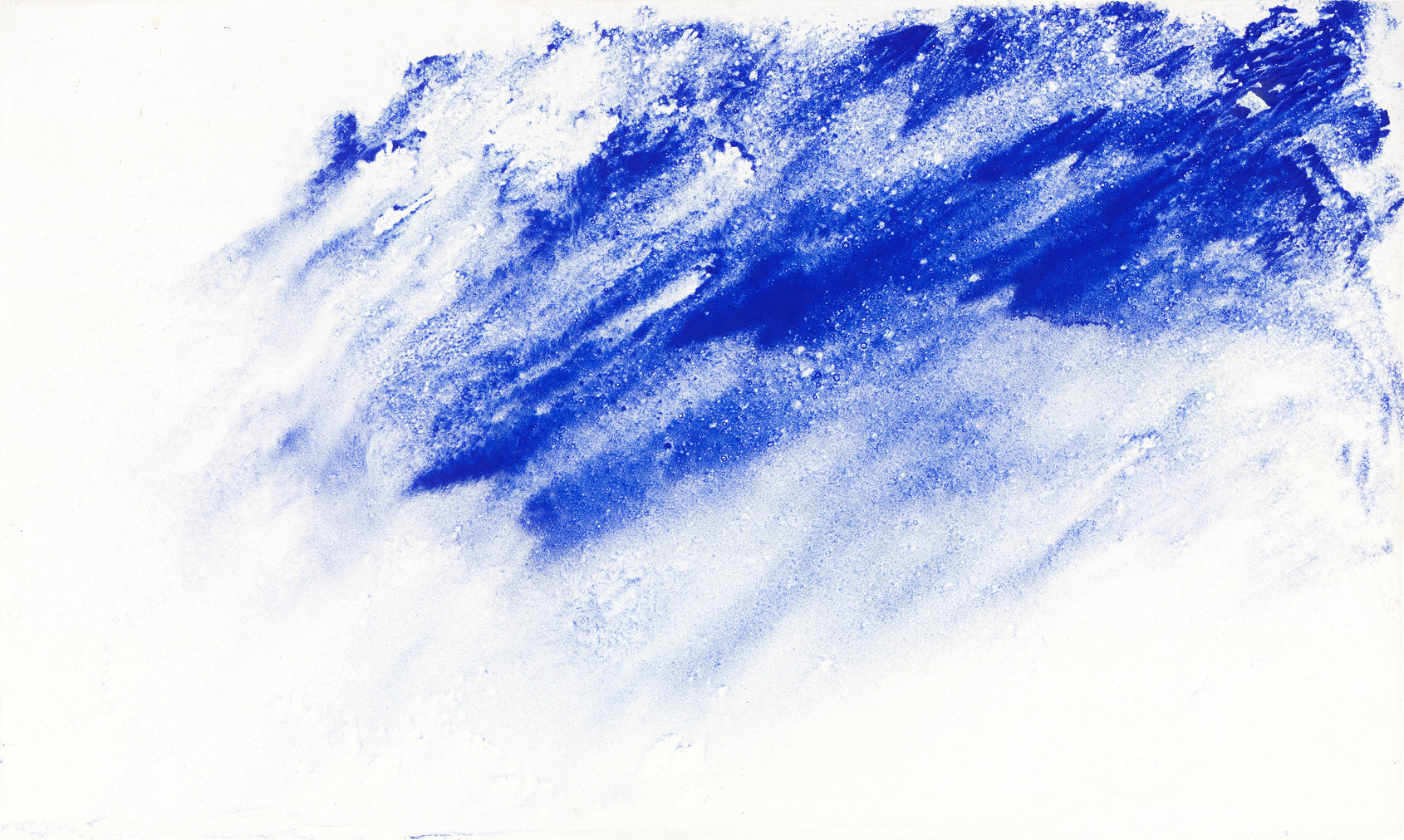 Walking on Water - Waves Study © Makoto Fujimura
Walking on Water - Waves Study © Makoto Fujimura 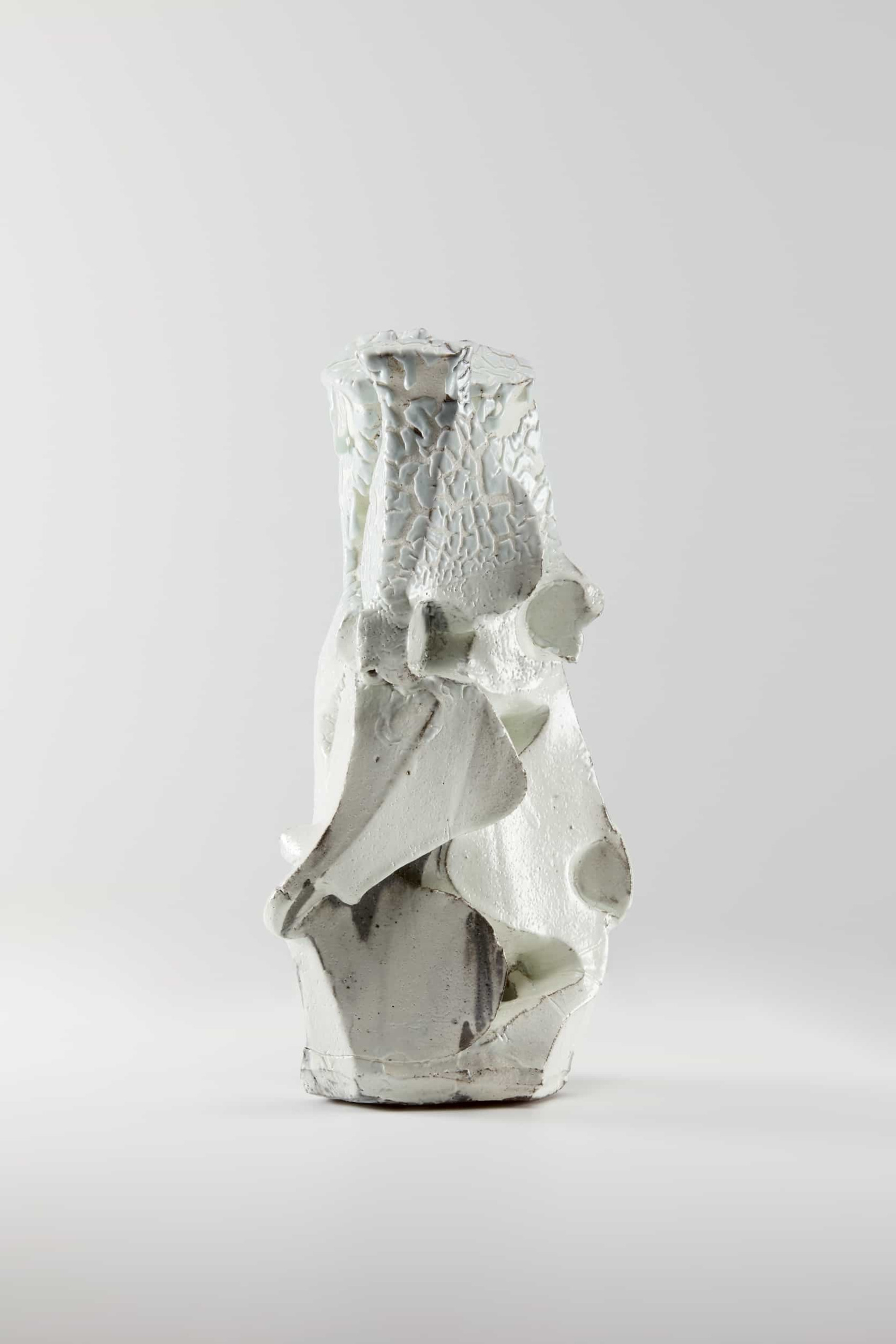 Kohiki Sculptural Form © Shozo Michikawa Triple Gaze
Kohiki Sculptural Form © Shozo Michikawa Triple GazeThe exhibition unfolds in three movements, corresponding to silent perception, transformation through adversity, and the path of faith that continues even within the impossible.
Chapter I:
Glittering in SilenceHere, the artist’s works resonate with, mirror, and displace each other, creating a profound, silent dialogue, and establishing a perceptual space that is not dominated by language. Here, there is no clearly defined narrative axis. Instead, the artists, through the layered textures of their materials and the interplay of light and shadow in space, inviting viewers into a process of slow and meticulous looking. This is an exercise in listening to silence and in gazing upon time, as well as a redefinition of what it means to “Shine” — light no longer emanates from intensity, but from an inner resonance arising within silence.
Chapter II:
Light Unfolds in the Darkest NightMakoto Fujimura inscribes prayers of stillness and layered depth through light and mineral pigments. Shozo Michikawa conveys the rhythms and fractures of nature through fire and clay. The latent energy within their works guides us to perceive how all things are shaped through the passage of time. Fujimura turns fracture, fissure, and silence into sites of renewal. His “inner luminosity” is light that rises from layered pigments, letting the material disclose its own radiance. Michikawa treats clay as a living partner — “making friends with the earth.” He uses the wheel’s twists and innovative wire-cutting to refine natural forms, charging the work with a renewing energy. Silver leaf, over time, alters its hue; clay, refined through fire, transforms into vessels of resilience — just as human beings, tempered by the crucible of circumstance, acquire new qualities of being.
Chapter III:
Walking on WaterThe third chapter constitutes the most tranquil zone of the exhibition, responding to the question of what it means to “walk within the impossible.” Amid the turbulence of contemporary reality, the exhibition summons steadiness and conviction in the face of impermanence, turning toward a gentle yet resolute state of coexistence. Breath is elongated, and sound and music emerge as vital languages, intertwining with the works to form rhythms of spirituality that mirror humanity’s profound yearning for the ideal.
This chapter also includes live elements: intimate concerts will be held throughout the exhibition period, where musicians improvise or select music in resonance with the works. These events are not conventional performances, but acts of listening, attunement, and response — alternative ways of seeing, and moments of shared resonance.
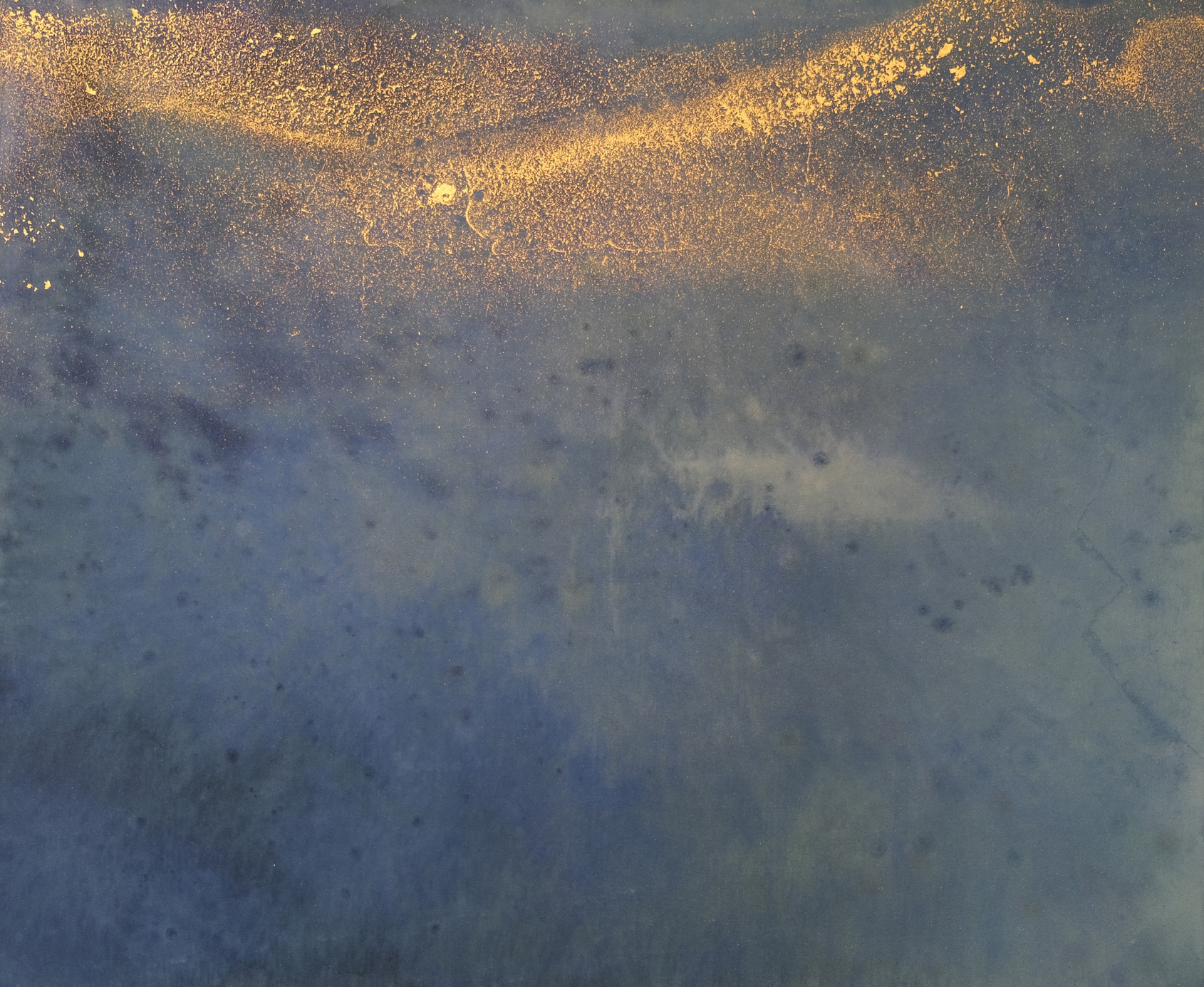 Kairos – Stardust © Makoto Fujimura Guided by Glimmers, Answered by Faith
Kairos – Stardust © Makoto Fujimura Guided by Glimmers, Answered by FaithThe journey begins with Makoto Fujimura’s Kairos – Stardust, opening a sacred field of vision. Kairos signifies a fissure in time — fleeting yet transformative. Stardust points toward faint glimmers adrift in darkness, like unformed hope flickering amid uncertainty. Golden particles drift across the canvas, layered like breath — resembling motes of dust in light, or unnamed stars deep within the cosmos. This is not a declarative radiance, but a fragile yet unwavering gleam — the first perceptual signal encountered by the viewer upon entering, symbolizing the ineffable stirring when “Dust” and “Gold” converge.
At the exhibition’s conclusion, Makoto Fujimura’s Walking on Water becomes both closing and threshold. It extends his long-standing inquiry into faith, trauma, and recovery. The canvas depicts no literal surface of water, yet through layered vibrations of pigment and strained brushwork, it summons the tension of steps suspended between doubt and resolve. This is not the miracle of a single instant, but a meditation on sustained walking — on preserving inner rhythm amid turmoil. Light no longer shines from outside, but arises from within, glowing faintly through fractures, guiding us to cross and to continue.
Gathering Light from Dust, Holding Memory in ClayFor this exhibition, Shozo Michikawa introduces elements of gold and silver into his works. Their lustrous gleams emerge from coarse ceramic textures, injecting a sudden spark of spirituality. These metallic inclusions are not ornamental but part of an intimate dialogue with matter — making “gold” a tangible trace of transformation within clay.
Alongside his celebrated Natural Ash series, Shozo Michikawa also presents works in the Kohiki technique. Originating in Korean white porcelain, Kohiki involves coating vessels with white slip and a transparent glaze, producing weathered, mottled surfaces that seem washed by time. For Shozo Michikawa, Kohiki represents restraint — its subdued whites and grays accentuate cracks and imperfections as quiet expressions of dignity.
Though sculptural in form, Shozo Michikawa insists that his works retain functionality — reflecting the ethos of Japanese ceramic culture, where even works imbued with spirituality must remain connected to daily use. His three major series here — Natural Ash (fire and ash interwoven), Volcano (eruptive and visceral), and Kohiki (delicate and contemplative) — together embody possibilities of transformation and bearing. Between fire, earth, and metal, his works crystallize the profound resonance of time compressed into form.
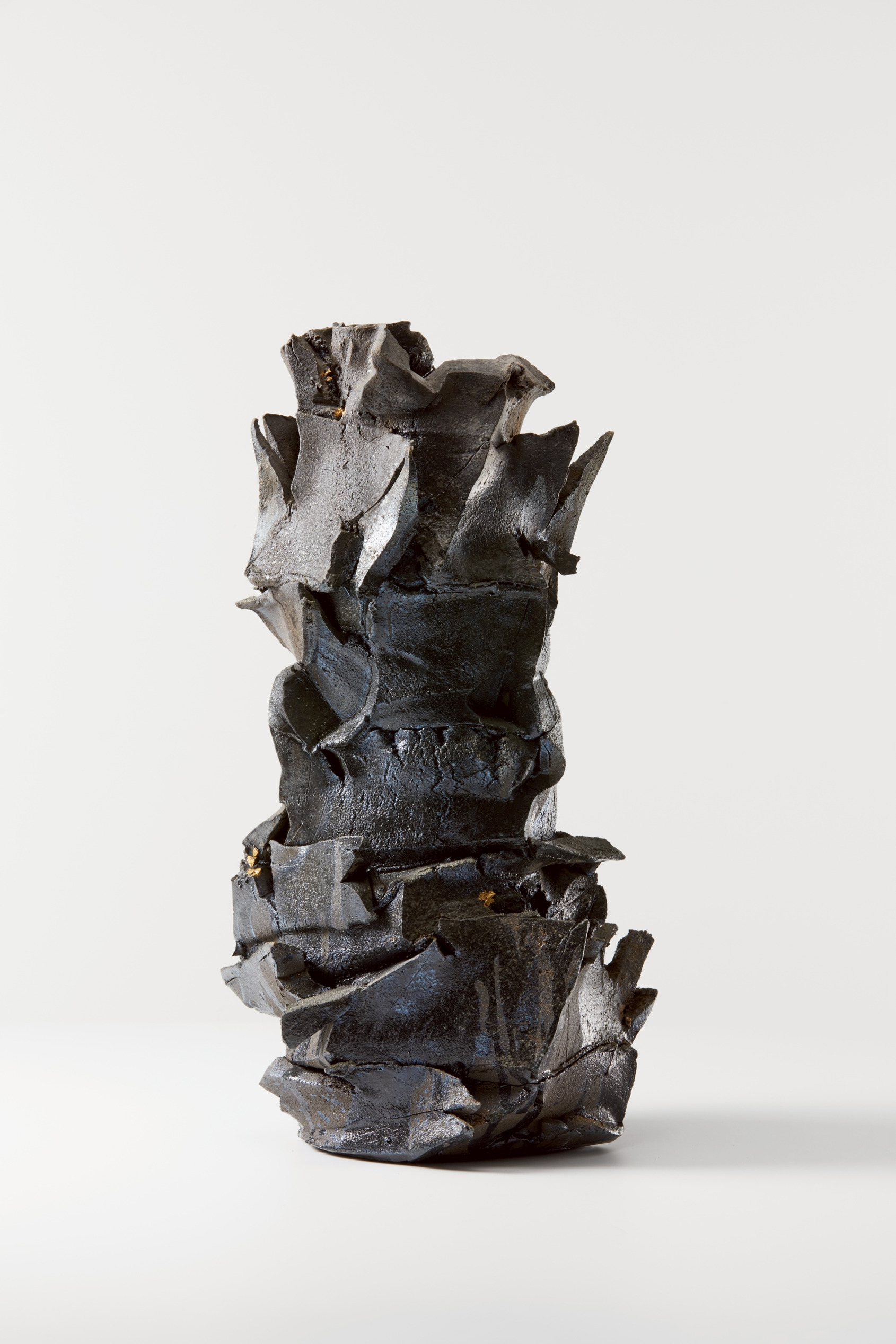 Volcano with gold Sculptural Form © Shozo Michikawa
Volcano with gold Sculptural Form © Shozo Michikawa
Jenny Lee is an independent curator and art writer active in the field of contemporary art. She is dedicated to fostering dialogue between international and local art communities, using curating and writing as bridges for cross-cultural practice and conceptual translation. For Dust and Gold, she situates “dust” and “gold” as the exhibition’s central metaphors, guiding viewers to experience how art becomes a sediment of time and a reservoir of spiritual energy. To her, artworks are not merely visual presentations but quiet resonances — prayers of perception, inviting deep dialogue with matter and spirit. In silent gaze, gathering light from dust, viewers may encounter the profound interplay between material and the immaterial.





